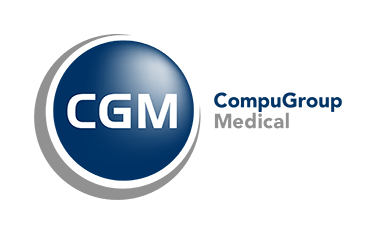Every healthcare practice's revenue cycle management is the same. It starts when a patient sets an appointment, and it ends when the practice receives payment. Managing your revenue cycle sounds simple enough, but the reality is there are lots of opportunities along the way where simple mistakes can cost your practice money.
For more than 20 years, ARIA Health Services has been offering revenue cycle services to our customers. Along the way, we've picked up a trick or two for establishing RCM best practices. Here are a few best practices to consider when looking to improve your healthcare practice's medical billing operations.
1. Consider enrollment as part of your healthcare revenue cycle management
Credentialing and enrollment are critical components of effective revenue cycle management. Yet, most practices dismiss these as unimportant.
Lapsed credentials or failing to enroll new providers in a timely manner can mean lost revenue, delayed payments, out-of-network services, and denials. It’s important that you consider credentialing and enrollment as part of your healthcare revenue cycle management big picture and dedicate time and resources to managing this important task.
2. Mitigate and manage denials
Claims denials are a common reason why many healthcare practices do not have a healthy revenue cycle management. Denials occur for many reasons including a coding error, duplicate claims, lack of information, timely filing issue, eligibility, and more.
Because claims may be denied for a variety of reasons, it is crucial that your healthcare practice closely monitors the claims process. Understanding the status of each claim as well as identifying why your claims are denied can help your staff recognize patterns and learn how to prevent mistakes in the future.
3. Manage your accounts receivable balances
Knowing your percent of Accounts Receivable (AR) over 90 days is a good indicator of your practice’s ability to collect timely payments. The more AR you are able to keep under 90 days old, the better your cash flow and the healthier your revenue cycle management. Factors that can influence timely payment include your payer mix, staff efficiency in addressing denied or aged claims, and the ability to collect patient payments.
MGMA recommends medical practices have no more than 12-14% of their AR in the over 90-day segment. High or rising percentages of AR over 90 is a strong indication your practice has a denials and follow-up problem. Analyze your rejected claims, denials, and contract compliance weekly. Look for trends or patterns that can be adjusted and avoided in the future.
4. Know your days revenue outstanding
Days revenue outstanding refers to the average number of days it takes your healthcare practice to collect payments due. The lower the number, the faster your practice is obtaining payment. Days revenue outstanding should stay below 50 days at minimum. However, 30 to 40 days is preferable. Depending on the specialty, high performing practices should aim for under 30 days.
5. Verify patient eligibility to boost RCM
Verifying patient eligibility is an indispensable process when it comes to billing patients, getting paid by insurance providers, and the overall management of practices’ revenue cycle.
With the rise in high-deductible and cost-sharing insurance plans, more and more patients are required to make payments at the time of service, though many patients are unaware of that fact. By using eligibility verification—particularly when done in advance—you can mitigate this problem, allowing you to give patients important information about the costs of their appointments before they come in.
6. Collect patient balances to complete the revenue cycle
The best time to collect patient balances is during the check-in or check-out process when the patient is in front of you and can pay immediately. Studies show that the chance of collecting from a patient drops almost 20% as soon as the patient leaves the office and continues to drop with each passing day.
7. Track your financial revenue cycle management performance
A happy (and financially stable) healthcare practice is a practice that maximizes and maintains consistent cash flow. To do that, you must effectively manage your finances. By analyzing Key Performance Indicators (KPIs) on a regular basis, you’ll gain a deeper understanding of your practice financials, but most importantly, it will help you determine if and where you might be experiencing revenue leaks.
Some KPIs your medical practice should consider tracking include:
- Net Collection Rate – In simple terms, your net collection rate tells you what you collect for every dollar billed. It provides insight into how much of your revenue is lost due to factors such as uncollectable debt, delays in claim filing, and other non-contractual adjustments.
- Accounts Receivable Analysis – Calculate your percentage of AR over 90 days. Use your practice management system to analyze the AR buckets. This will help you determine if it’s a patient problem, an insurance problem, or both.
- Days Revenue Outstanding – Take a deep-dive into days revenue outstanding. This data determines the velocity of your payments.
- Charge Posting and Billing Lag Analysis – Track this to see how long it takes your provider to enter a charge and then how long it takes your biller to submit that claim to the insurance carrier.
For those key performance indicators at which you look every month, the most important question to ask is, “How has this changed since last month?” In addition to running your reports, make sure you are using the data they contain to identify problem areas and then develop plans for improvement. The earlier you can spot negative trends, the easier it will be to course correct.
Whether you do your own billing and collections or use an outside billing service, using these best practices can help your practice increase cash flow, decrease account receivables, reduce expenses, streamline workflow, and most importantly, improve control of your business.
Watch our on-demand webinar for a full list of our Top Ten Revenue Cycle Management Best Practices.
